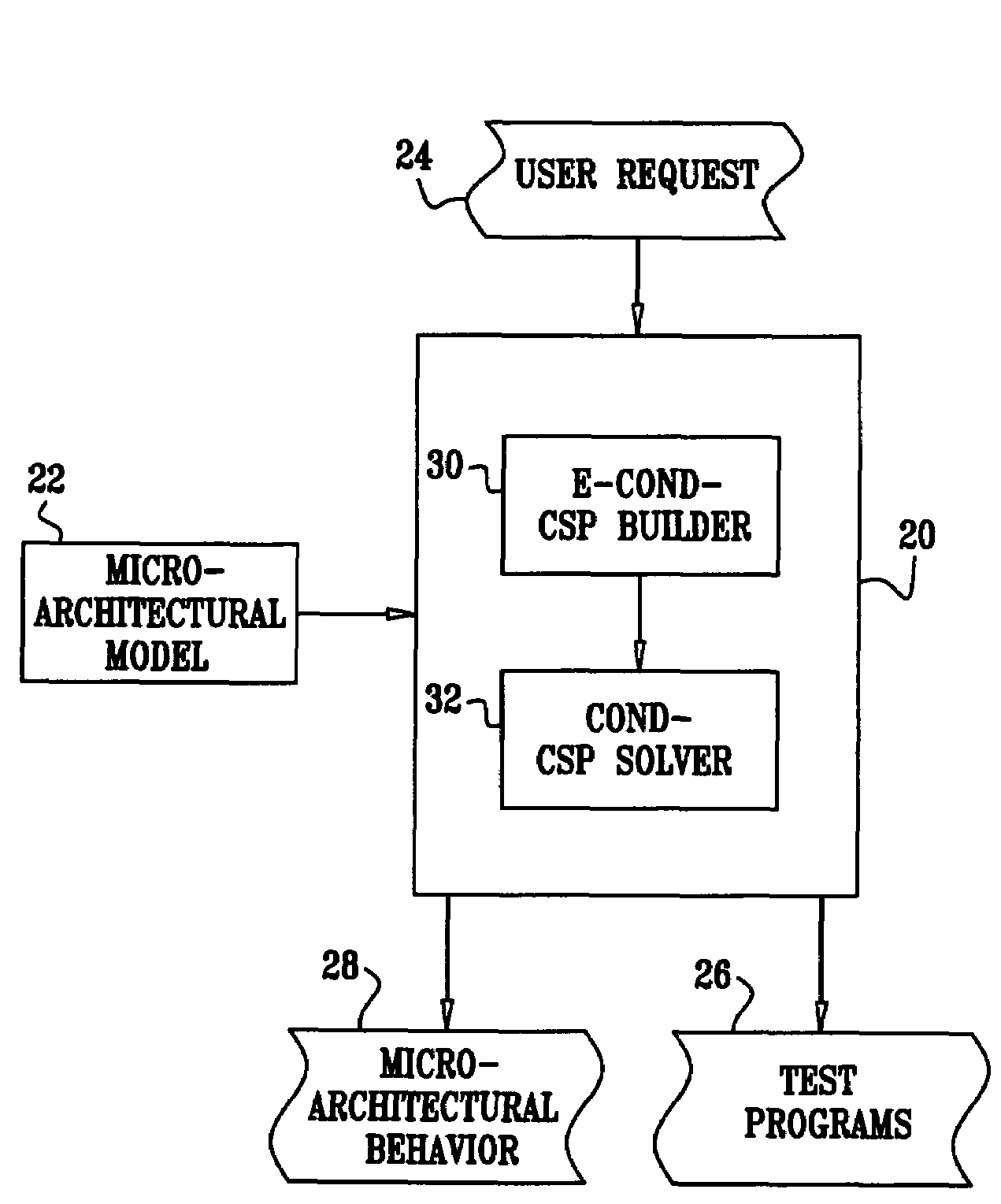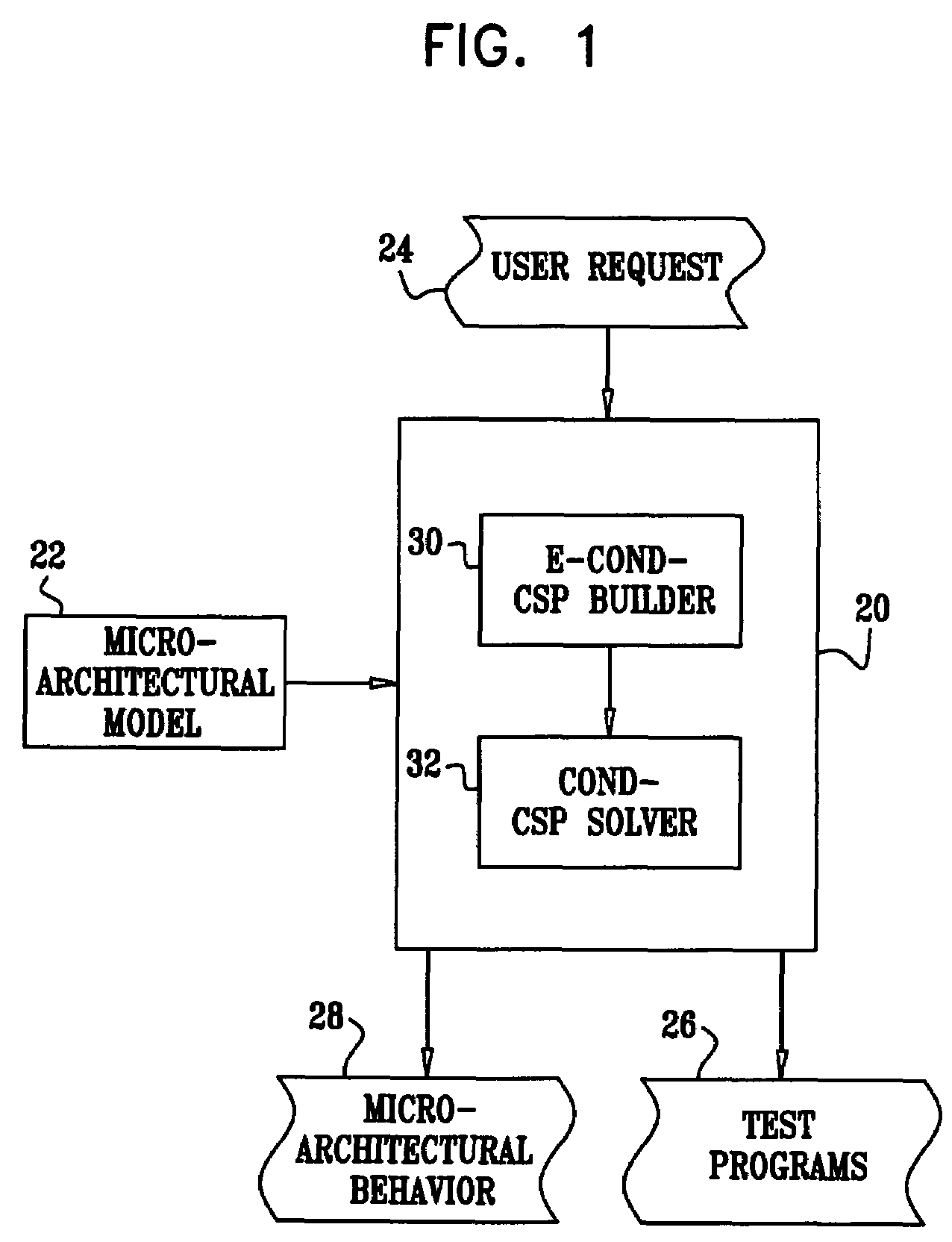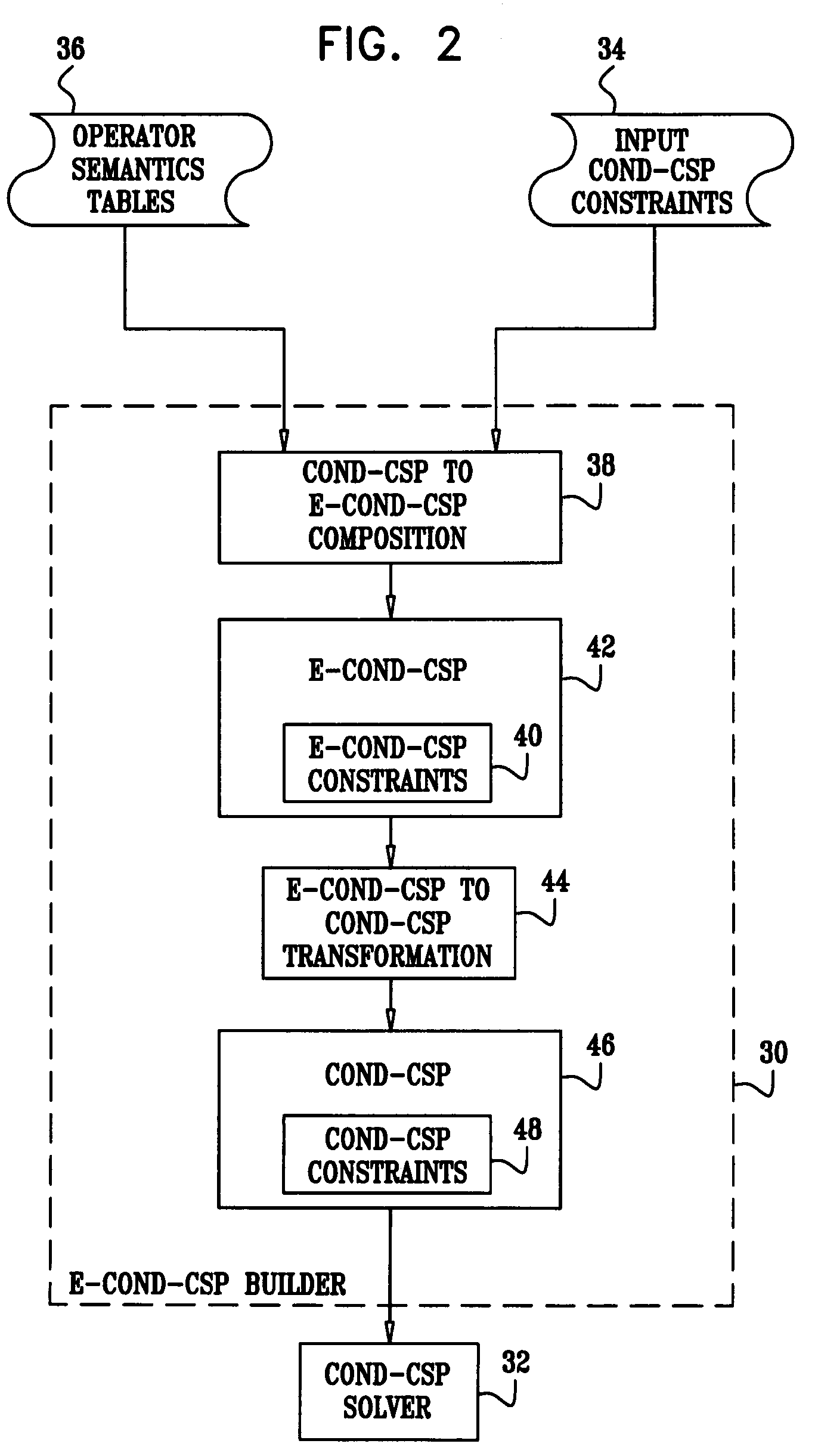Automatic test program generation using extended conditional constraint satisfaction
a conditional constraint and automatic test program technology, applied in the field of constraints, can solve the problems of increasing the probability of introducing modeling errors, affecting the accuracy of automatic test program generation, and reducing so as to reduce labor and reduce the chance of modeling errors
- Summary
- Abstract
- Description
- Claims
- Application Information
AI Technical Summary
Benefits of technology
Problems solved by technology
Method used
Image
Examples
example i
[0130]Consider a possible semantics table of the (logical “and”) operator, as applied to operands (lower level constraints) C1 and C2:
[0131]
C1 activityC2 activityPreserved semantics1ActiveActiveResulting_semantics(S1, S2) = S1 S22ActiveInactiveNone3InactiveActiveNone4InactiveInactiveNone
[0132]In this example, the semantics of the operator are preserved only when both C1 and C2 are active. In general, as noted above, C1 and C2 are ECondCSP constraints themselves (although at the simplest level, these constraints may simply be atomic expressions over one or more variables). Therefore, C1 and C2 may have multiple possible activation requirements with corresponding preserved semantics. Row 1 of the semantics table should be interpreted as follows: For each activation requirement AR1 of constraint C1, with corresponding preserved semantics S1, and for each activation requirement AR2 of constraint C2, with corresponding preserved semantics S2, if (AR1 AND AR2!=FALSE) add the following p...
example ii
[0140]The second example is more complex. The example demonstrates a case in which the OST contains a row having an inactive lower-level constraint, but still produces some preserved semantics for the resulting constraint.
[0141]Consider a possible semantics table for the (logical “or”) operator, as shown in the table below. Operands (lower level constraints) are again denoted C1 and C2.
[0142]
C1 activityC2 activityPreserved semantics1ActiveActiveResulting_semantics(S1, S2) = S1 S22ActiveInactiveResulting_semantics(S1) = S13InactiveActiveResulting_semantics(S2) = S24InactiveInactiveNone
[0143]Row 1 of the operator semantics table is calculated in a manner similar to the previous example. For each activation requirement AR1 of C1, with corresponding preserved semantics S1, and for each activation requirement AR2 of C2, with corresponding preserved semantics S2, if AR1 and AR2 are consistent, add the following pair of activation requirement and preserved semantics to the ECondCSP constr...
PUM
 Login to View More
Login to View More Abstract
Description
Claims
Application Information
 Login to View More
Login to View More - R&D
- Intellectual Property
- Life Sciences
- Materials
- Tech Scout
- Unparalleled Data Quality
- Higher Quality Content
- 60% Fewer Hallucinations
Browse by: Latest US Patents, China's latest patents, Technical Efficacy Thesaurus, Application Domain, Technology Topic, Popular Technical Reports.
© 2025 PatSnap. All rights reserved.Legal|Privacy policy|Modern Slavery Act Transparency Statement|Sitemap|About US| Contact US: help@patsnap.com



